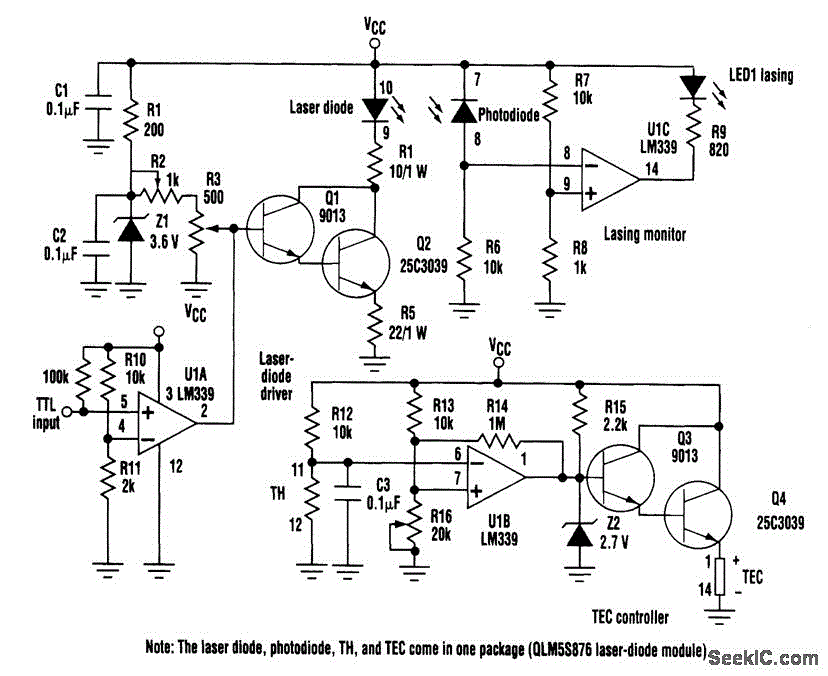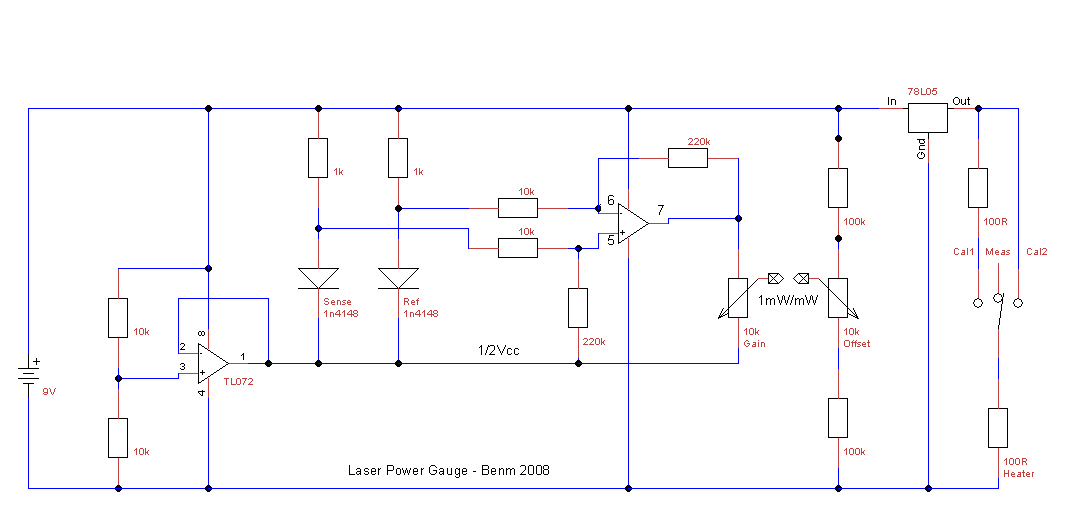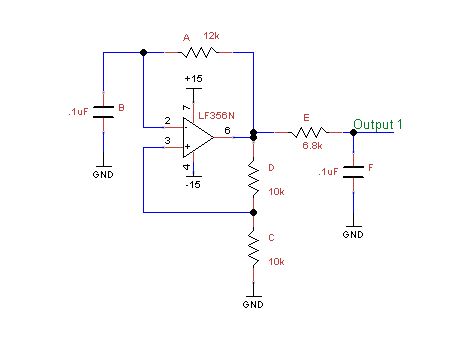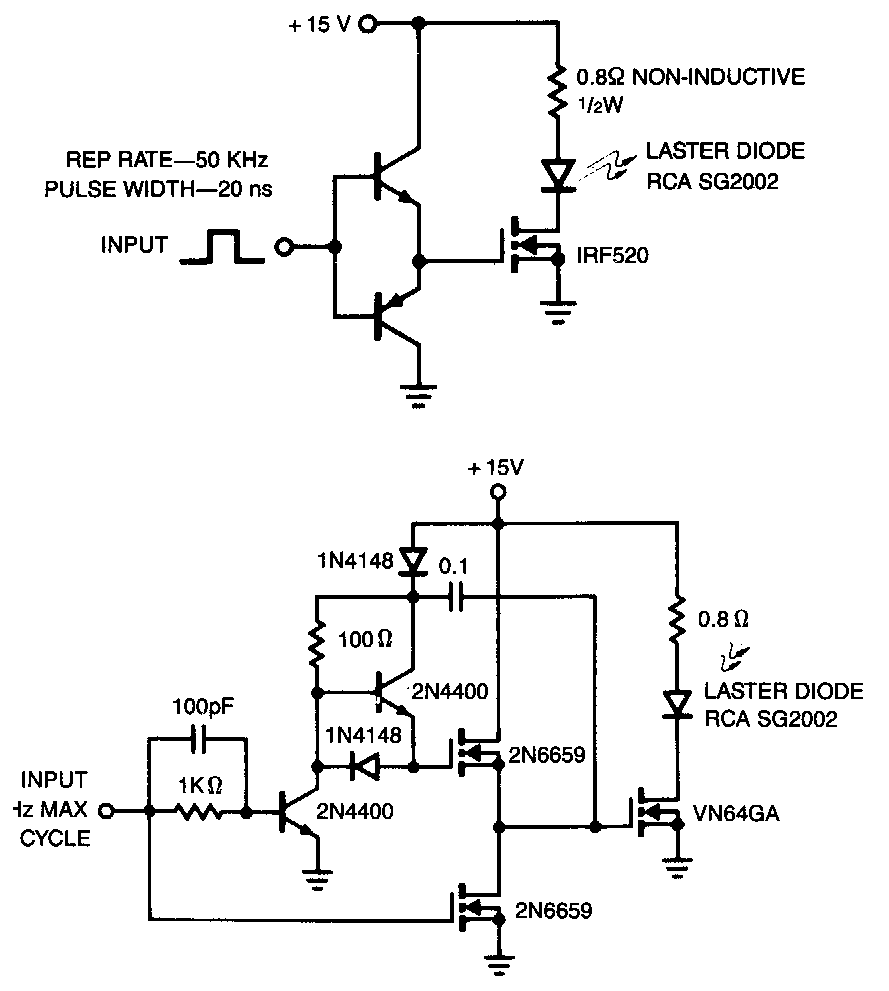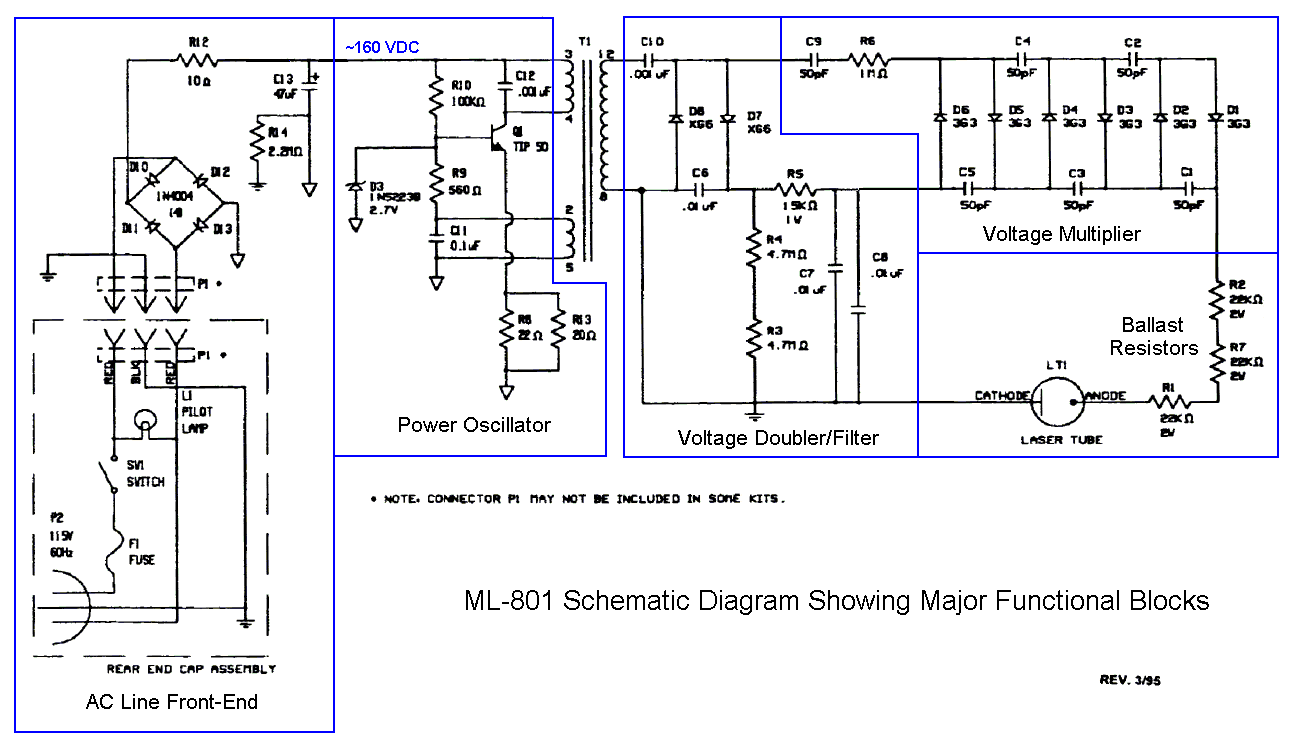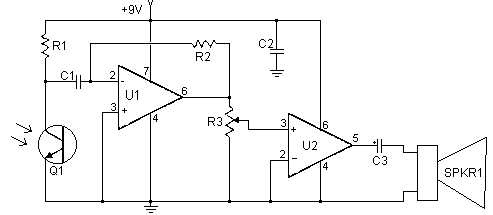
Laser Interference Pattern Enumerator
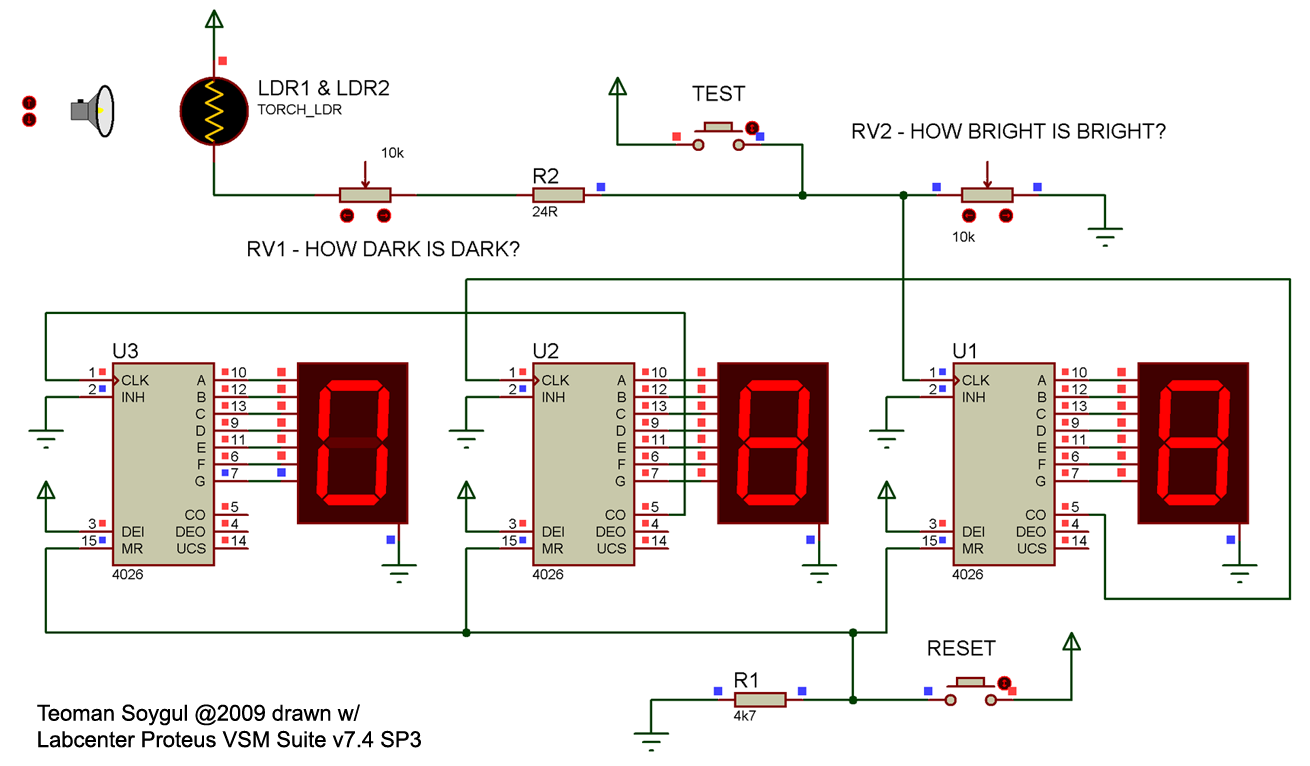
An interferometer is primarily utilized for calculating the index of refraction of gases and transparent materials, such as air and glass. This process involves counting each interference circle individually. Achieving precise measurements necessitates counting up to a hundred circles, which can be challenging due to the rapid movement of the circles, even when the measurement arm is moved as slowly as possible. Although it is difficult for the human eye to track such swift motion, this presents a relatively straightforward application in optoelectronics. Consequently, an enumerator has been designed for laboratory use as a final project for a Linear Electronics II class. The constructed device is capable of counting laser interference and diffraction patterns, as well as various other patterns, provided there is sufficient light. Successful pattern counting has been achieved on surfaces such as a wooden desk, a fine wire grid, a stamped concrete wall, and even a Turkish carpet. The circuit includes adjustment buttons that allow for modifications to accommodate any pattern transition, enhancing its versatility for counting diverse patterns on various objects. For counting laser interference patterns, this project serves as an excellent resource, capable of enumerating patterns at high speeds, with a light-dependent resistor (LDR) achieving 30 switches per second. The design is presented in a concise format, suitable for printing as a guide. Each final project is accompanied by a comprehensive report, which serves as the ultimate documentation, detailing the problem, proposed solution, and the methods and tools employed. Although the report is written in Turkish (except for the cover), key information has been included on the webpage to facilitate understanding and replication of the project. Specific component details are available in the project report, which can be translated using Google Translate if necessary. For technical writing, engineers are advised to refer to the IEEE Standards Style Manual. Additional resources for report writing are provided, including guides from the University of Sussex and MIT. All necessary files for rebuilding the project are available in the resources section, including complete schematics in PNG format created with Labcenter Proteus, which offers full simulation capabilities for such circuits. The light source and LDR can be manipulated in the simulation to observe circuit responses to changes in light intensity, with one full cycle (transitioning from dark to light and back) serving as a trigger for the counter.
The enumerator circuit designed for the interferometer project utilizes a light-dependent resistor (LDR) to detect variations in light intensity caused by interference patterns. The core of the circuit includes a microcontroller that processes signals from the LDR and drives a counter for pattern enumeration. The microcontroller is programmed to recognize light transitions, effectively counting each cycle of light intensity change as a single event. The adjustment buttons integrated into the circuit allow users to calibrate the sensitivity of the LDR, ensuring accurate detection across different patterns and lighting conditions.
The design features a power supply circuit that ensures stable operation of the microcontroller and LDR. The choice of components is critical; the LDR is selected for its rapid response time and sensitivity to light changes, while the microcontroller is chosen for its processing speed and ease of programming. The circuit layout is optimized for minimal noise interference, which could affect the accuracy of the counting process.
Simulation of the circuit using Labcenter Proteus provides valuable insights into its performance under varying conditions. The ability to manipulate the light source in the simulation allows for testing of the circuit's response to different light intensities and patterns. This capability is essential for validating the design before physical implementation. The schematic diagram illustrates the connections between the LDR, microcontroller, and power supply, ensuring clarity in the design for future replicators.
Documentation accompanying the project includes detailed descriptions of each component, their specifications, and the rationale behind their selection. The report also outlines the testing methodology used to verify the functionality of the enumerator, including real-world applications and potential improvements for future iterations. This comprehensive approach ensures that the project is not only replicable but also serves as a valuable resource for further research and development in the field of optoelectronics.Interferometer is best used in calculating the index of refraction of gasses and transparent matter (i. e. air and glass). Doing so requires counting each interference circle one by one. As a matter of fact, getting a precise measurement requires counting up to a hundred circles which is almost impossible because circles move quite fast even when the measurement arm is winded as
slow as possible. Even though it is quite hard for human eyes to follow such rapid movement, it makes a fairly easy Optoelectronics application. For that reason, I have designed an enumerator (image on top) for our lab, as a final project for Linear Electronics II class.
Even though I have built the box for counting laser interference and diffraction patterns, it can enumerate all sorts of patterns given there is enough light. Personally, I have successfully counted patterns on a wooden desk, a very fine wire grid, a stamped concrete wall, and even the patterns on a Turkish carpet.
Using the adjustment buttons gives the ability to adjust the circuit to any possible pattern transition thus making it useful for counting all kinds of patterns on any object. For counting laser interference patterns like the ones to the right, this project provides an excellent resource.
Not only will it be able to enumerate through the patterns at lightning speed (my LDR provided me with 30 switches per second), but it will also provide you with utmost tool for counting any other pattern and count them quite precisely. As I took a very straightforward approach into this design, the project content is below and all in one page, as you will easily be able to print this page and use it as a guide.
As usual, every final project is accompanied by a great project report (to get a reward for all that hard work). The report itself is the ultimate documentation for this project as it contains an in depth analysis of the problem and the solution as well as the methods and tools used in the process.
Although I have written the report all in Turkish (except the cover) as it was due submission to archives too, I tried to put as much information from it into the web page as possible. This page contains all the information needed to understand the project in depth and replicate it if needed but very specific information about the components used in the project are all in the project report.
If you need, you can translate the. pdf file with Google translator from Turkish to English. Any engineer`s guide to technical writing is IEEE`s Standards Style Manual (at least for electrical and computer related stuff). You can always find the latest version here (or the 2009 version local copy here ). As it is a bit time consuming to get your report in IEEE`s shape, I personally use University of Sussex`s Guide to Technical Report Writing (local copy here ) or when I am completely short of time I prefer something a lot more easier like MIT`s digital systems lab report guide (local copy here ).
Just for your information (as this is a question that I receive daily especially from the readers of my articles such as this one here). Again, all the files you will need if you even want to rebuild this project is posted above in the resources box.
They are also presented in text, in case you missed something. Above is the complete schematics in. png format (click on the image for full size). The above circuit diagram is drawn with Labcenter Proteus, which provides full simulation features for this sort of circuits. Look at how the light source and LDR are simulated. You can easily move the light source away from or towards the LDR and see how the circuit reacts to changes in light intensity (as in pattern transitions like moving from darker side of a pattern to a lighter portion of it).
One full cycle (moving from dark to light and then back to dark) will act as a trigger and counter will increment by one. If you want to test it 🔗 External reference
The enumerator circuit designed for the interferometer project utilizes a light-dependent resistor (LDR) to detect variations in light intensity caused by interference patterns. The core of the circuit includes a microcontroller that processes signals from the LDR and drives a counter for pattern enumeration. The microcontroller is programmed to recognize light transitions, effectively counting each cycle of light intensity change as a single event. The adjustment buttons integrated into the circuit allow users to calibrate the sensitivity of the LDR, ensuring accurate detection across different patterns and lighting conditions.
The design features a power supply circuit that ensures stable operation of the microcontroller and LDR. The choice of components is critical; the LDR is selected for its rapid response time and sensitivity to light changes, while the microcontroller is chosen for its processing speed and ease of programming. The circuit layout is optimized for minimal noise interference, which could affect the accuracy of the counting process.
Simulation of the circuit using Labcenter Proteus provides valuable insights into its performance under varying conditions. The ability to manipulate the light source in the simulation allows for testing of the circuit's response to different light intensities and patterns. This capability is essential for validating the design before physical implementation. The schematic diagram illustrates the connections between the LDR, microcontroller, and power supply, ensuring clarity in the design for future replicators.
Documentation accompanying the project includes detailed descriptions of each component, their specifications, and the rationale behind their selection. The report also outlines the testing methodology used to verify the functionality of the enumerator, including real-world applications and potential improvements for future iterations. This comprehensive approach ensures that the project is not only replicable but also serves as a valuable resource for further research and development in the field of optoelectronics.Interferometer is best used in calculating the index of refraction of gasses and transparent matter (i. e. air and glass). Doing so requires counting each interference circle one by one. As a matter of fact, getting a precise measurement requires counting up to a hundred circles which is almost impossible because circles move quite fast even when the measurement arm is winded as
slow as possible. Even though it is quite hard for human eyes to follow such rapid movement, it makes a fairly easy Optoelectronics application. For that reason, I have designed an enumerator (image on top) for our lab, as a final project for Linear Electronics II class.
Even though I have built the box for counting laser interference and diffraction patterns, it can enumerate all sorts of patterns given there is enough light. Personally, I have successfully counted patterns on a wooden desk, a very fine wire grid, a stamped concrete wall, and even the patterns on a Turkish carpet.
Using the adjustment buttons gives the ability to adjust the circuit to any possible pattern transition thus making it useful for counting all kinds of patterns on any object. For counting laser interference patterns like the ones to the right, this project provides an excellent resource.
Not only will it be able to enumerate through the patterns at lightning speed (my LDR provided me with 30 switches per second), but it will also provide you with utmost tool for counting any other pattern and count them quite precisely. As I took a very straightforward approach into this design, the project content is below and all in one page, as you will easily be able to print this page and use it as a guide.
As usual, every final project is accompanied by a great project report (to get a reward for all that hard work). The report itself is the ultimate documentation for this project as it contains an in depth analysis of the problem and the solution as well as the methods and tools used in the process.
Although I have written the report all in Turkish (except the cover) as it was due submission to archives too, I tried to put as much information from it into the web page as possible. This page contains all the information needed to understand the project in depth and replicate it if needed but very specific information about the components used in the project are all in the project report.
If you need, you can translate the. pdf file with Google translator from Turkish to English. Any engineer`s guide to technical writing is IEEE`s Standards Style Manual (at least for electrical and computer related stuff). You can always find the latest version here (or the 2009 version local copy here ). As it is a bit time consuming to get your report in IEEE`s shape, I personally use University of Sussex`s Guide to Technical Report Writing (local copy here ) or when I am completely short of time I prefer something a lot more easier like MIT`s digital systems lab report guide (local copy here ).
Just for your information (as this is a question that I receive daily especially from the readers of my articles such as this one here). Again, all the files you will need if you even want to rebuild this project is posted above in the resources box.
They are also presented in text, in case you missed something. Above is the complete schematics in. png format (click on the image for full size). The above circuit diagram is drawn with Labcenter Proteus, which provides full simulation features for this sort of circuits. Look at how the light source and LDR are simulated. You can easily move the light source away from or towards the LDR and see how the circuit reacts to changes in light intensity (as in pattern transitions like moving from darker side of a pattern to a lighter portion of it).
One full cycle (moving from dark to light and then back to dark) will act as a trigger and counter will increment by one. If you want to test it 🔗 External reference
